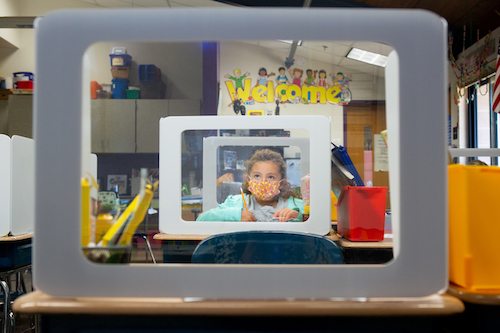 In response to the global COVID-19 pandemic that has now killed over 1 million Americans, the federal government has allocated billions of dollars in funding for schools. Known as the Elementary and Secondary School Emergency Relief Fund (ESSER), the funds were distributed in three separate tranches:
In response to the global COVID-19 pandemic that has now killed over 1 million Americans, the federal government has allocated billions of dollars in funding for schools. Known as the Elementary and Secondary School Emergency Relief Fund (ESSER), the funds were distributed in three separate tranches:
ESSER I – On March 27, 2020, Congress set aside approximately $13.2 billion of the $30.75 billion allotted to the Education Stabilization Fund through the Coronavirus Aid Relief, and Economic Security (CARES) Act for the Elementary and Secondary School Emergency Relief Fund (ESSER) Fund.
ESSER II – The Coronavirus Response and Relief Supplemental Appropriations (CRRSA) Act, 2021, was signed into law on December 27, 2020, and provided an additional $54.3 billion for the Elementary and Secondary School Emergency Relief (ESSER II) Fund.
ESSER III – On Thursday, March 11, 2021, the American Rescue Plan (ARP) Act was signed into law. It was an unprecedented $1.9 trillion package of assistance measures, including $122 billion for the ARP Elementary and Secondary School Emergency Relief (ARP ESSER) Fund. Funds are provided to SEAs and LEAs to help safely reopen and sustain the same operation of schools and address the impact of the coronavirus pandemic on the Nation’s students.
This year, under ESSER III, Michigan received $3.7 billion in funds to distribute to local educational agencies (LEAs), which includes some charter schools. LEAs must provide equitable services to students and teachers in non-public schools as required under the CARES Act.
The Michigan Education Justice Coalition (MEJC) has put together a guidance for putting these funds to work:
The Michigan Education Justice Coalition (MEJC) has authored a set of key values titled the Healthy and Healing Schools Platform. These values guide the vision MEJC holds for building a system of public schools that provides public access to quality educational options and positive learning environments for ALL children in Michigan. Now is a unique time to leverage ESSER funds to implement systems, structures, and resources to ensure our children get the best education possible. This document serves as a set of recommendations for LEAs to allocate ESSER funds based on the Values defined in the Healthy and Healing Schools Platform.
Between April 19, 2021, and June 30, 2021, MEJC surveyed Michigan residents statewide through an online survey in English, Spanish, and Bangla. The top five priorities they uncovered were:
- Mental health services
- Special education
- Early childhood education
- Family support services
- Overcoming the technology gap
The least popular items were “more police in schools” and “more standardized testing”.
MEJC’s priorities, which are explained in detail in their report, focus on these specific items:
- Academics and the right to a quality education
- Providing summer, after-school learning and enrichment opportunities
- Addressing the needs of low-income students, students with disabilities, English language learners, migrant students, students experiencing homelessness, and youth in foster care
- Improving student attendance and engagement
- Family and community engagement
- Connecting with families to inform them of available opportunities
- Implementing Restorative Practices
- Wellness preparedness and response to COVID-19
- Acquiring new digital tools to assist in teaching, scheduling, and collaboration, and training staff for implementation
- Improved indoor air quality
- Supporting teachers in modifying curricula for virtual learning
- Increasing support staffing (such as librarians and technology help desk personnel)
- Improving and updating technological infrastructure
- Purchasing new educational technology
- Flexible and alternative classrooms
- Outdoor classrooms can be created & deconstructed in moments
- Mental health support
- Implementing evidence-based programs to support social and emotional learning, resilience, and trauma sensitivity
- Designing classrooms and other in-school spaces to promote relationship building and mental wellness
- Offering mental health support for students, families, and staff
- Access to daily physical activities
- School climate
- Professional development for school staff
- Continued staff employment
- Hiring extra substitute teachers to support flexible scheduling
- Offering more generous sick leave to encourage staff to stay home when they do not feel well
- Continuing to employ current staff
MEJC is offering these recommendations in the hopes that school boards will adopt them and are urging school districts around the state to hold townhall meetings where they can hear from parents and be transparent about the process and how the funds will be spent.
This funding presents a unique opportunity for schools to close education funding gaps and fill needs that have gone largely unmet due to massive defunding of public schools over the past two decades. Here’s hoping school districts will be open to their suggestions and adopt them in ways that truly benefit both students and educators in Michigan.
[Photo by Allison Shelley for EDUimages]



